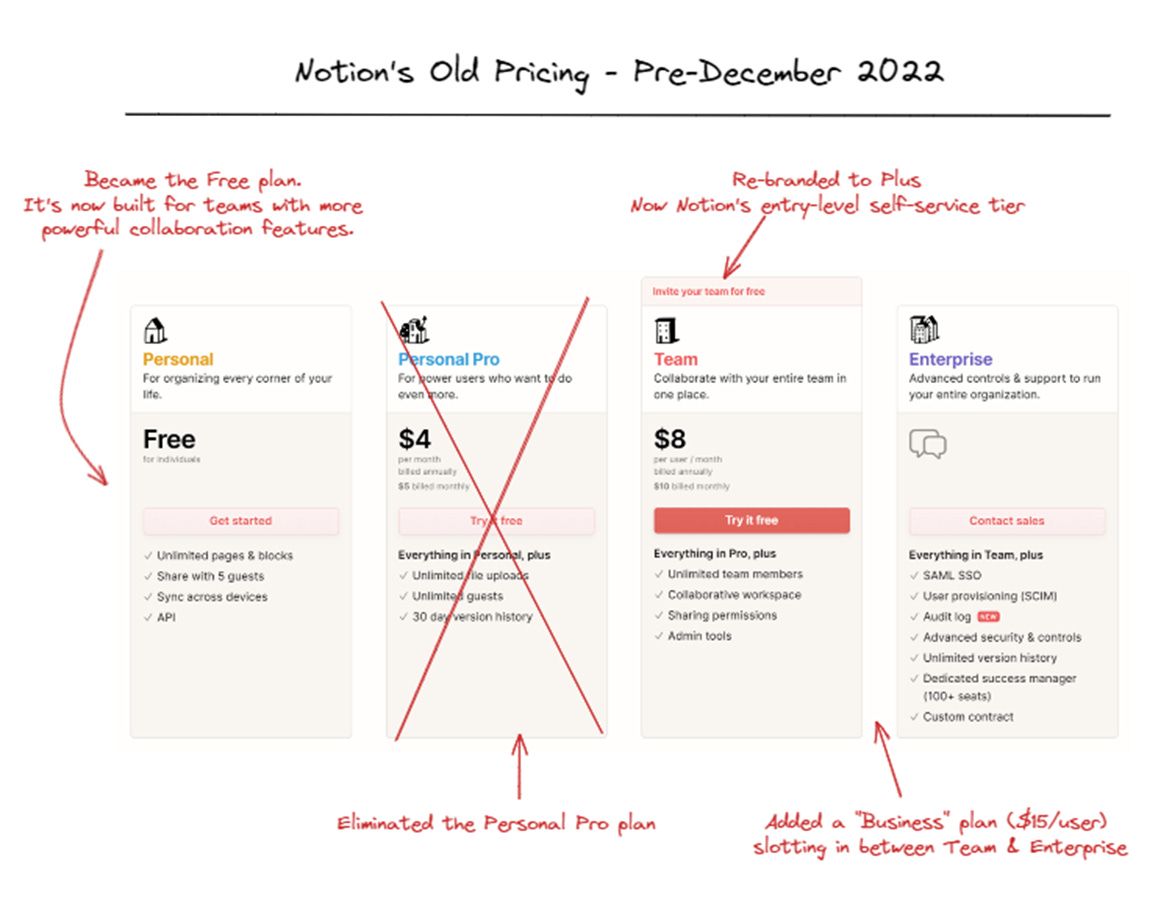Your guide to PLG pricing 201
How to build an unstoppable monetization engine around your PLG product
The guidance on pricing for PLG products is, admittedly, surface-level at best.
Conventional wisdom tends to go something like this:
Let users try-before-they-buy with either a freemium edition, free trial, reverse trial, or low-price entry package.
Design pricing to be transparent and straightforward so that it doesn’t deter users from signing up.
Make your user-focused features as widely accessible as possible while monetizing team- and org-level capabilities such as single sign-on (SSO), advanced security, invoiced billing, robust admin settings, and premium support.
Select a pricing metric that allows you to seamlessly expand within an account as they deepen their product usage.
These are certainly helpful rules of thumb. And what we’re left with is a starting point for pricing that works well enough for the average PLG startup.
I keep thinking about the 201 version of PLG pricing: how to build an unstoppable monetization engine around your PLG product.
Here I’ll start to unpack PLG pricing 201. I’ll walk through the most common PLG pricing mistakes that I see time and again – and what to do instead. Be on the lookout for real-life examples from Canva, Notion, Figma, and more.
Mistake #1 - Your pricing is optimized for individual users
In December 2022, Notion overhauled their self-service plans and pricing. It was a long time coming.
The PLG giant – valued at $10 billion – effectively signaled a shift from focusing monetization on power users to focusing monetization on businesses. They:
Killed their individual user Personal Pro plan
Improved the Free plan to allow for more powerful team collaboration than before
Doubled entry pricing from $4/user to $8/user
Rebranded the Team plan to Plus since every plan has built-in collaboration and is meant to be used by teams
Wait a minute… isn’t PLG supposed to focus on the end-user?
Yes and no. You’ll want to land with an individual and then create products and pricing to go from individual to team as fast as possible.
Single-user products see poor unit economics (low retention, low LTV:CAC, high support burden). Teams products look more like the B2B SaaS economics we know and love. Team revenue is worth $$$ – it should be valued accordingly.
Ideally, all of your plans should have the option of being used with multiple users in an organization. SurveyMonkey actually takes this a step further, requiring their new Team plans to have multiple users. This helps you reach more champions in an org and enables your customers to discover more use cases, making the product stickier.
Mistake #2 - You ignore the *admin* experience of PLG pricing
Keep reading with a 7-day free trial
Subscribe to Kyle Poyar’s Growth Unhinged to keep reading this post and get 7 days of free access to the full post archives.




